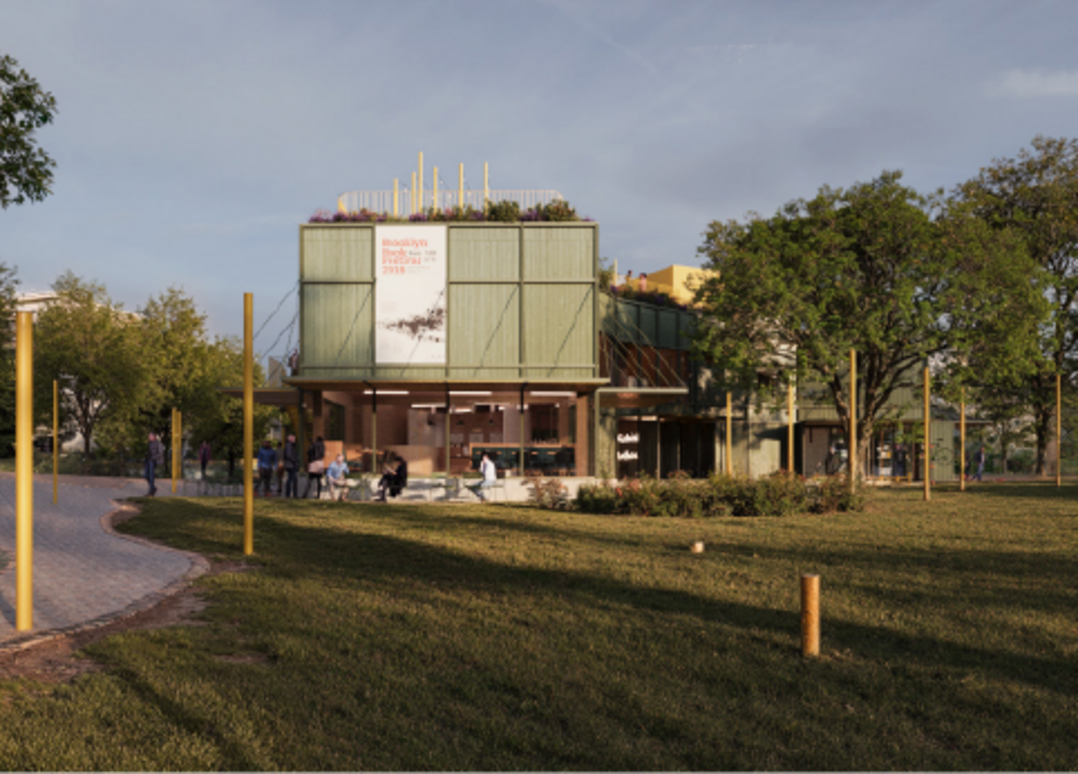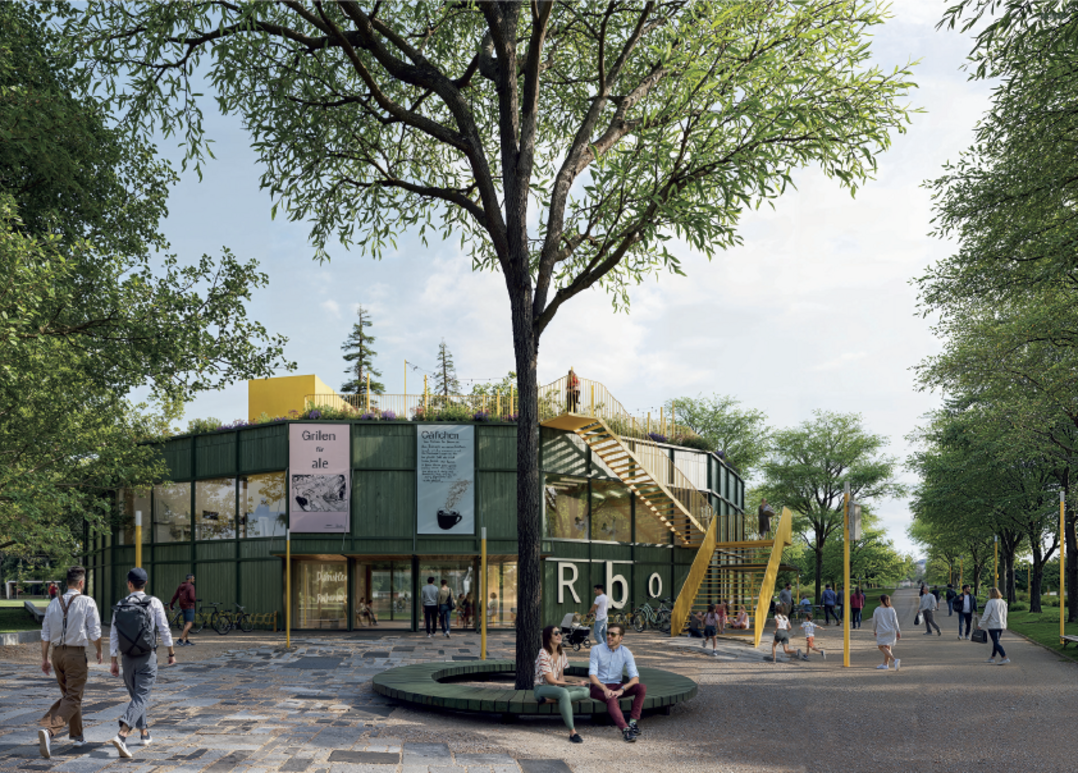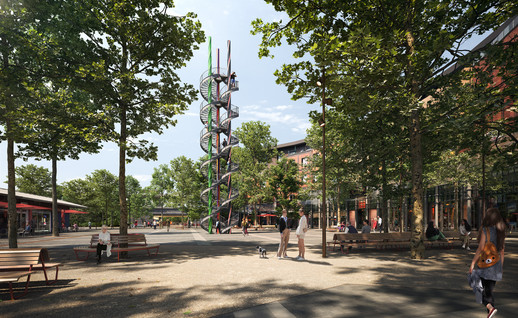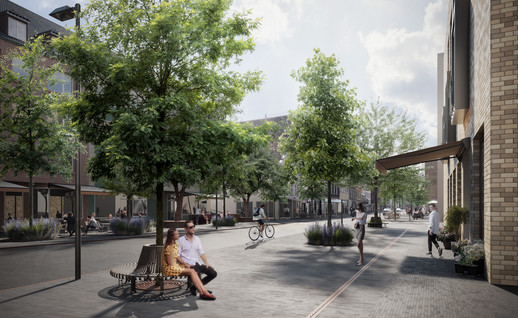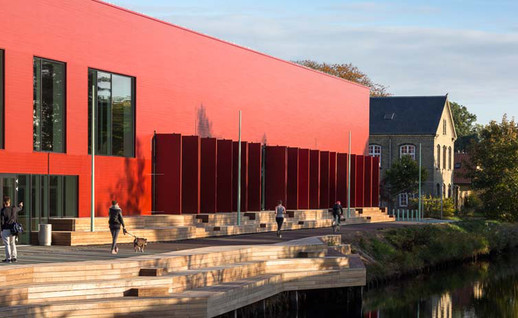Rothenburgsort Culture pavilion & park
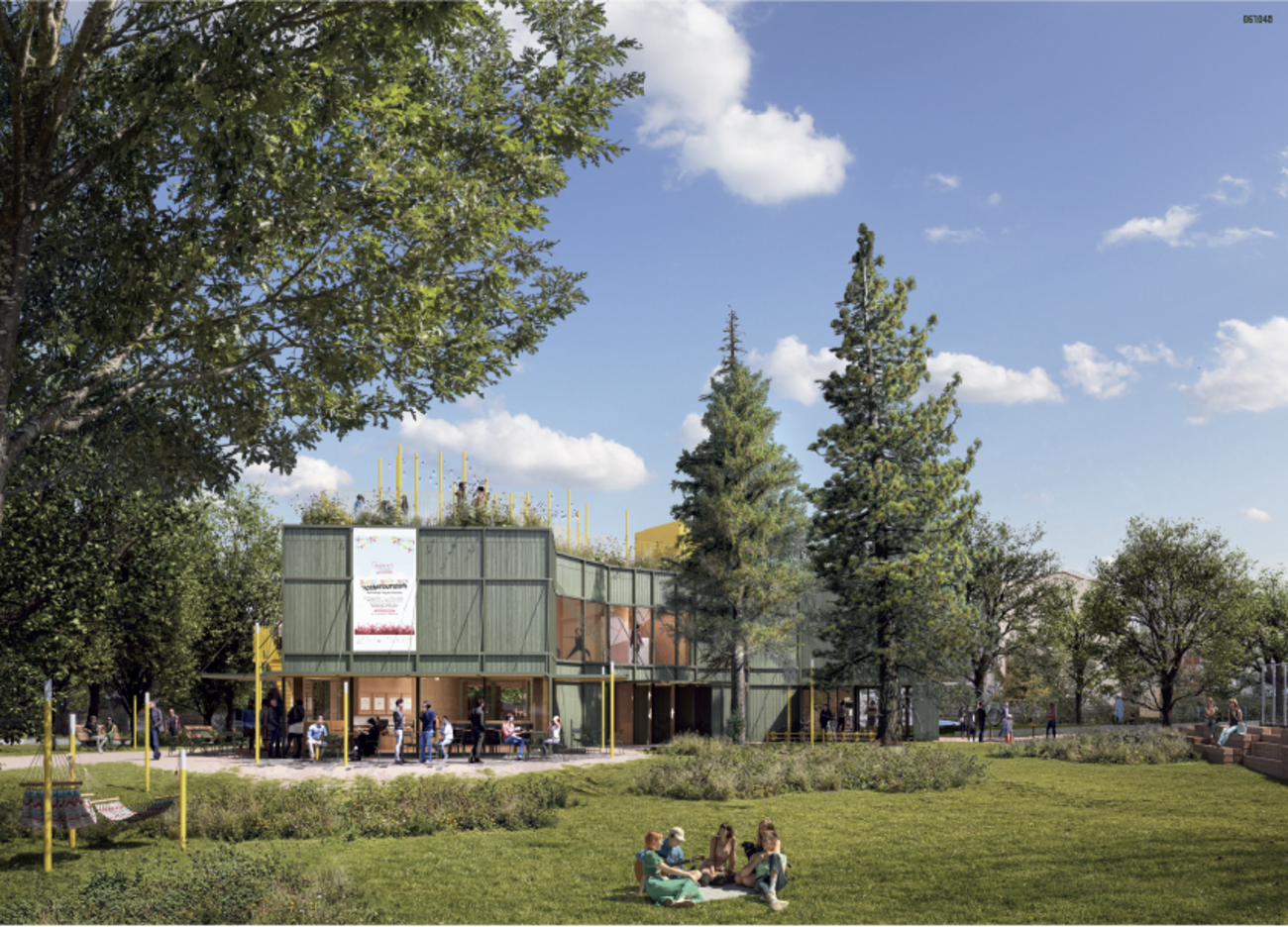
Info
Description
The park and cultural pavilion form the final link in the Alster-Bille-Elbe green corridor, completing the connection to the Elbe River. With a distinctive entrance and a clear green axis, the project creates a natural transition from city to waterfront. The promenade runs like a backbone through the park, guiding visitors along the way.
Along the route, visitors encounter:
- The Sunny Meadow and Birch Grove, where nature is given sp much room to thrive. Winding paths mown through tall grass lead to play areas marked by yellow poles, which can be used for hammocks, climbing, fitness, birdhouses, and more.
- The Youth Island – a colorfully painted asphalt zone for street play, skating, and hanging out
- The Park Tribune – a seating, lounging, and sunning structure shaded by multi-stemmed trees
- The Café Terrace by the Culture Pavilion, a gathering spot for all generations
Together, these elements give the park its unique identity as the concluding point of the green corridor.
Reused materials add character
The park’s surface is crafted using recycled materials such as old concrete bricks, natural stone, and clay pavers sourced from the city’s material bank. These reused elements are given new life and lend the park a unique and sensory-rich character. The varied textures help define clear zones for pedestrians and cyclists.
Plants, trees and wildlife
Existing trees and ground vegetation form the foundation for the park’s fauna and biodiversity. To enhance the green character and ecological balance, new trees and shrubs are added—such as oak, linden, elder, spindle, and hawthorn—species known to support biodiversity. This creates a varied landscape and contributes to a richer natural environment in the area.
Strategy for Developing Fauna and Biodiversity in the Park
- Preservation of existing vegetation, herbs, and perennials
- Removal of invasive and fast-growing species to make room for native flora
- Sowing of plant species that support biodiversity
- Establishment of BIO-POINTS: stones, tree stumps, and brush piles that create habitats for insects and small animals
- A targeted maintenance plan including meadow cutting, aimed at gradually enhancing biodiversity

